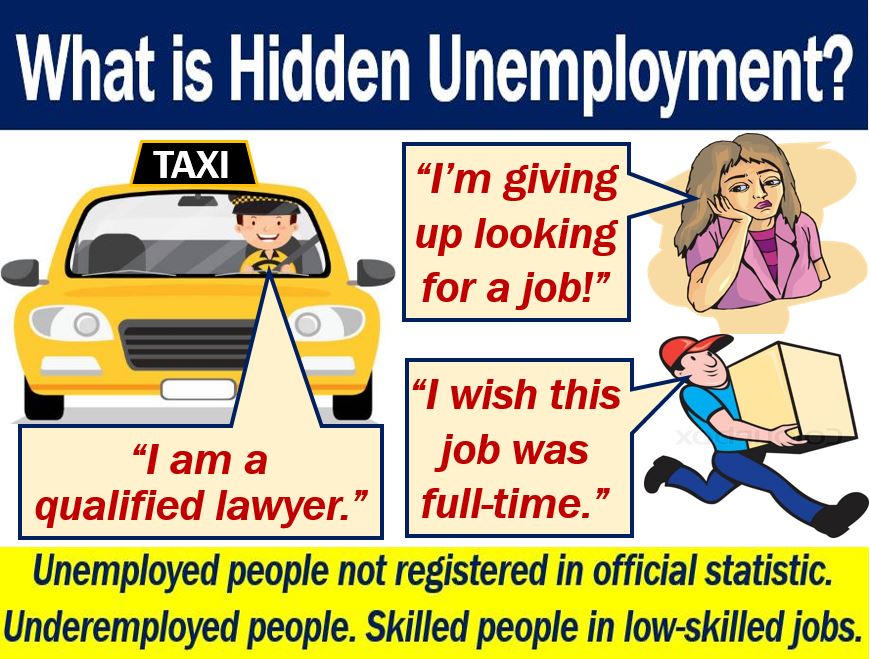Hidden unemployment – definition and meaning
Hidden unemployment refers to people who are jobless, but official unemployment figures do not include them. The term also includes people who are underemployed. Official unemployment figures often only include people with no job but who are actively seeking work.
We often use the term ‘disguised unemployment‘ with the same meaning as hidden unemployment.
Underemployment includes highly-skilled people who are working in low-paying jobs. Part-time workers who would like to work full-time also form part of the underemployment total. Hidden employment includes underemployment.
The Cambridge Dictionary has the following definition of hidden unemployment:
“The number of people who do not have work but who are not counted in government reports, for example, people who have stopped looking for a job and people who work less than they want to.”
Disguised unemployment includes people who are working but are making no difference to total production.
For example, in many developing nations, farms have too many workers. If some of those farm-workers left, total production would remain the same.

Involuntary and hidden unemployment
Involuntary unemployment includes people who are willing to work but cannot do so. They can’t work due to factors beyond their control.
The factors that prevent them from working include labor market inflexibilities and a deficiency in aggregate demand. Sometimes, illness is also a factor.
Hidden unemployment and underemployment
People who are doing part-time work are underemployed if they want to and can do full-time work.
Underemployment also includes individuals who are significantly overqualified for their current job. For example, a doctor who works as a taxi driver forms part of the underemployment total.
Hidden unemployment includes, among others, people who are underemployed.
Types of unemployment
There are several types of unemployment.
Frictional unemployment
Frictional unemployment includes people who are in between jobs. They are sending resumes (CVs), attending interviews, and researching new job opportunities.
When unemployment is very low, people spend longer in between jobs. They spend longer because they do not fear never being able to find a job.
When unemployment is high, however, they are in more of a hurry.
Hidden unemployment
As mentioned above, this type of unemployment includes people who do not appear in official statistics.
Long-term unemployment
Long-term unemployment includes people who have been jobless for at least twelve months.
We also call this type ‘hardcore unemployment.’
Cyclical unemployment
This term refers to people losing their jobs because of dips in the business cycle. GDP grows and shrinks during the business cycle. GDP stands for Gross Domestic Product.
When GDP shrinks, unemployment rises. When it grows, however, unemployment falls.

